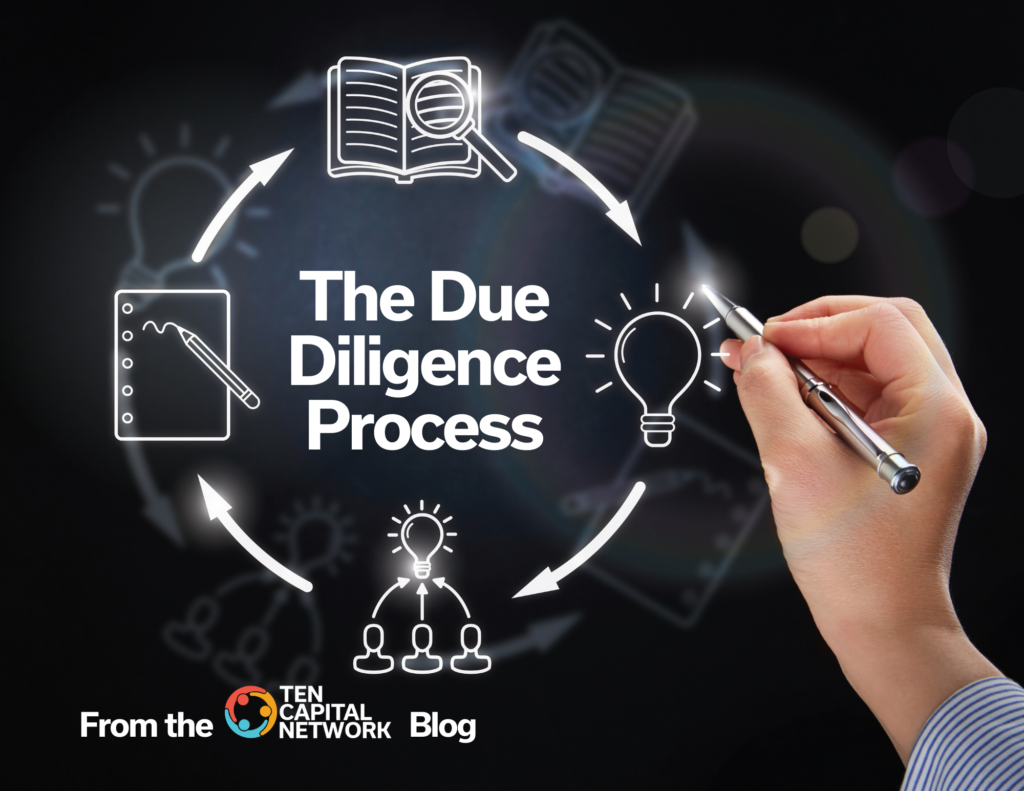The Due Diligence Process
2 min read When embarking on a new investment, it’s essential to have a Due Diligence process in place to check the basics. This process will vary from deal to deal based on the risks associated with each one. Start by making a list of your concerns. In most cases, you’ll sign a terms sheet with funding contingent on due diligence. It helps to tell the company about your diligence process, such as what documents are required, what steps you take, and how long it will be, thereby eliminating the “how is it going” calls. There are three phases to diligence: Documentation Diligence, Team Diligence, and Domain Diligence. Documentation Diligence Ask the startup for a list of critical documents. If they are not all in one spot, ask the team to put them into a Google Drive folder, or create a more secure Box.com account. It’s common for startups to continually add to their diligence boxes and have many people view them simultaneously, so keeping everything in one place is very helpful. The primary documents should be: Entity filings and articles of incorporation Patent filings Income statement Balance sheet statement 3-5 year financial projections Cap table Other documents related to the business, such as lawsuits, product breakdowns, customer breakdowns, etc. should be requested. Read each document and check to see if it matches what you understood about the deal. Note any differences and ask for clarification. You must review the diligence documents so you understand the business. You may need to sign a Non Disclosure Agreement (NDA) for sensitive information. It’s standard practice to do so as the documentation should be kept confidential, even without an NDA in place. Team Diligence Thoroughly researching the startup’s team is the most critical part of the Due Diligence process. Meet with the team and assess their skills. In almost every startup failure, the investor can trace it back to the team not being up to the task. It may be the task was under-estimated by all upfront, but with the right team, the company can succeed. Gather references for the CEO and call them up to hear what they have to say about the founder, including management style, how they pivot, and their team dynamics. In most cases, you’ve heard the CEO pitch, but it’s essential to understand the CEO skills set, including what is there and what is not. The rest of the team needs to bring the necessary skills to succeed. Domain Diligence Let’s break this process down into steps: Research the competition to determine the company’s position in the marketplace Check the positioning of the company in the marketplace Identify the value proposition and how well it resonates with customers Look at their pricing compared to the competition Check the industry to see the conditions in which it will grow or decline Once you finish diligence and have your questions answered, ask for their wiring instructions Remember, break it down into baby steps Finally, use the model of “fast no’s and slow yes’s” in reviewing a deal, so the entrepreneur is not chasing you for a response. Read more: http://staging.startupfundingespresso.com/education/ Hall T. Martin is the founder and CEO of the TEN Capital Network.TEN Capital has been connecting startups with investors for over ten years. You can connect with Hall about fundraising, business growth, and emerging technologies via LinkedIn or email: hallmartin@tencapital.group
The Due Diligence Process Read More »


